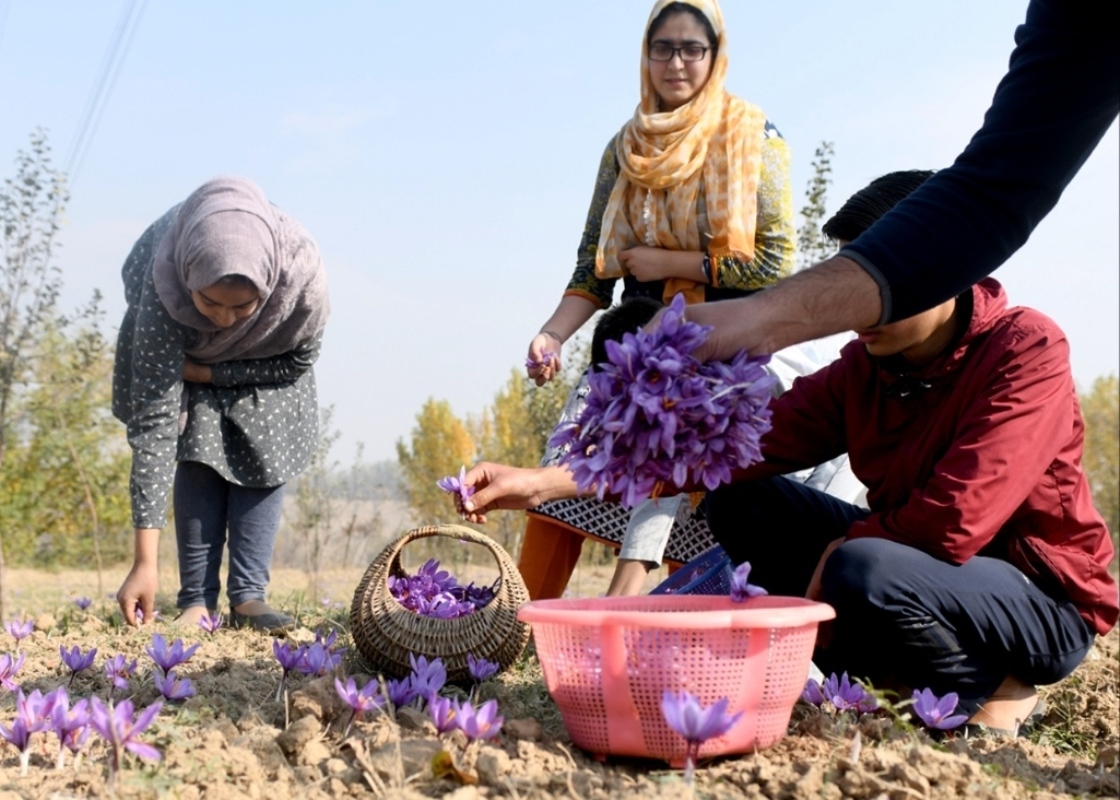India has become the only saffron-producing country to earn a Geographical Indication (GI) tag for its Kashmir saffron. Iran is the largest producer of saffron in the world while India is a close competitor.
However, an official spokesman said on Tuesday that the GI tag will result in more prominence for the Kashmir saffron in the export market, thereby boosting its exports. This will in turn help the farmers to get the best remunerative price for economic sustainability, said.
Advertisement
The GI certification would also cease the prevalent adulteration of saffron and will put an end to the marketing of saffron cultivated in other countries under the garb of being produced in Kashmir which otherwise was affecting the economic interests of the farmers associated with this crop.
To give a boost to saffron production in Kashmir, J&K Government has launched new initiatives including the introduction of GI Tagging. The GI sign is used on products that have a specific geographical origin and possess qualities or a reputation that are due to that origin.
Saffron growers are hopeful that they will now get a better price for their produce after the introduction of the GI tag to the saffron grown here. Kashmiri Saffron is grown at an altitude of 1,600 m to 1,800 m above mean sea level, which adds to its uniqueness and differentiates it from other saffron varieties available across the world.
Saffron is cultivated and harvested in the Karewas (highlands) of Jammu and Kashmir and has been assigned GI tag by the Geographical Indications Registry. The spice is grown in Pulwama, Budgam, Kishtwar and Srinagar regions of Jammu & Kashmir.
Highlighting the importance of preserving the unique identity of Kashmiri Saffron, an official of the Agriculture Department said that Kashmir is having the distinction of producing one of the best saffron in the world, therefore it is our individual and collective moral responsibility to preserve this golden spice not only for a large number of families directly associated with the cultivation of saffron but for our generations to come.
Saffron, despite its price, is in high demand for its antioxidant properties. It carries a hefty price tag also because the process of converting crocus flowers into the thread-like spice is painstaking and labour-intensive as it takes around 160,000 flowers to yield a kilogram of saffron.
Kashmiri saffron is of superior quality because of the higher concentration of crocin, a carotenoid pigment that gives saffron its colour and medicinal value. Its crocin content is 8.72% compared to the Iranian variant’s 6.82%, giving it a darker colour and enhanced medicinal value.
Kashmiri Saffron is globally popular as a spice. It rejuvenates health and is used in cosmetics and for medicinal purposes. It has been associated with traditional Kashmiri cuisine and represents the rich cultural heritage of the region. The unique characteristics of Kashmir saffron are its longer and thicker stigmas, natural deep-red colour, high aroma, bitter flavour, chemical-free processing, and high quantity of crocin (colouring strength), safranal (flavour) and picrocrocin (bitterness).
Remarkably, a new saffron park has been set up just for the sole purpose of processing and promoting the sale of saffron from Kashmir Valley. The samples brought by growers are tested here. The lab is recognised across the world. There are 8 parameters that are tested, which are internationally recognized. The 8 parameters include moisture, extraneous matter and foreign matter, and total ash and three main characteristics. They are graded and then e-auctioned. The farmers get the flowers and then the stigma separation and vacuum drying are done at the Dusoo Park.
Traditionally the farmers used to dry the saffron under shade at home but due to that, the saffron used to lose the main components. Now all the parameters are saved to get the best grade, an official of the Saffron Park said.
With the GI tag, saffron growers and traders are getting more benefits like legal protection to the products as well as prevention of unauthorized use of GI tag products by others.











